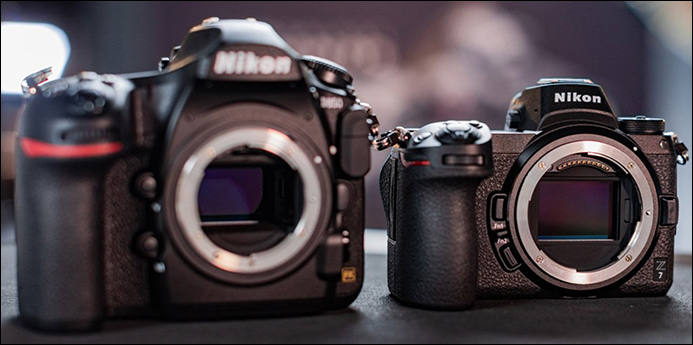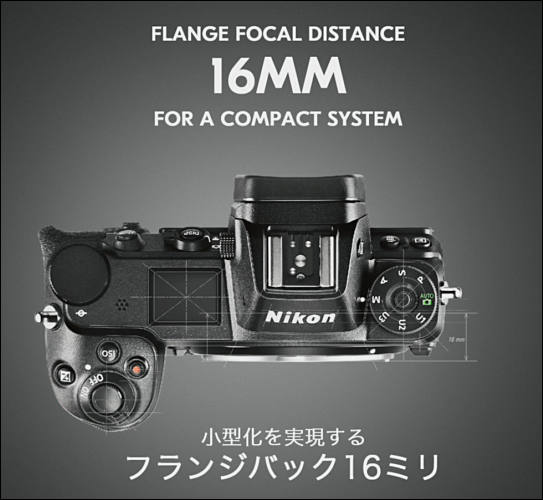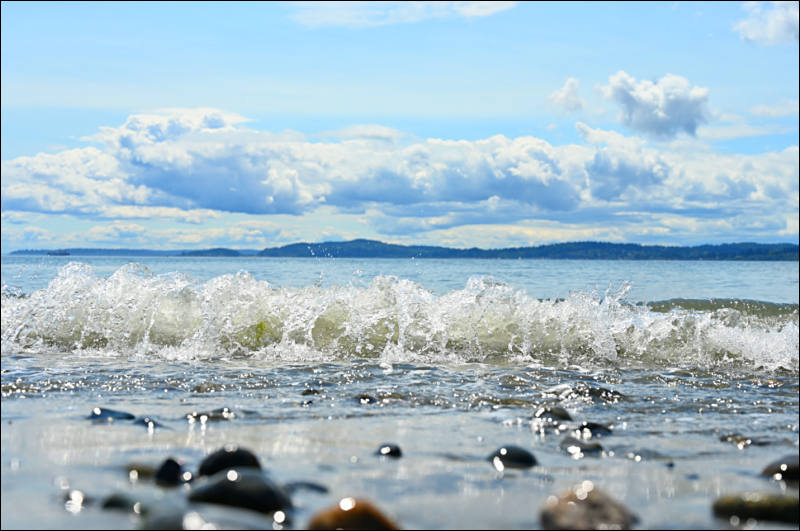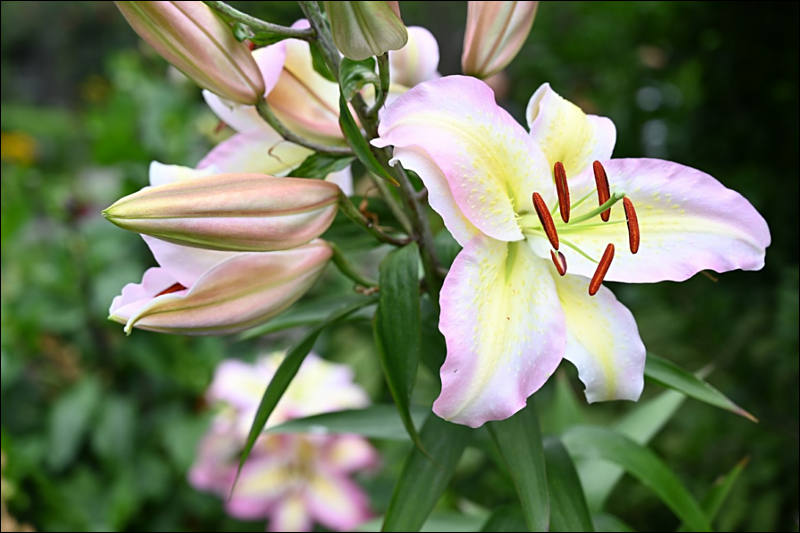
It allows to keep PV going, with more focus towards AI, but keeping be one of the few truly independent places.
-
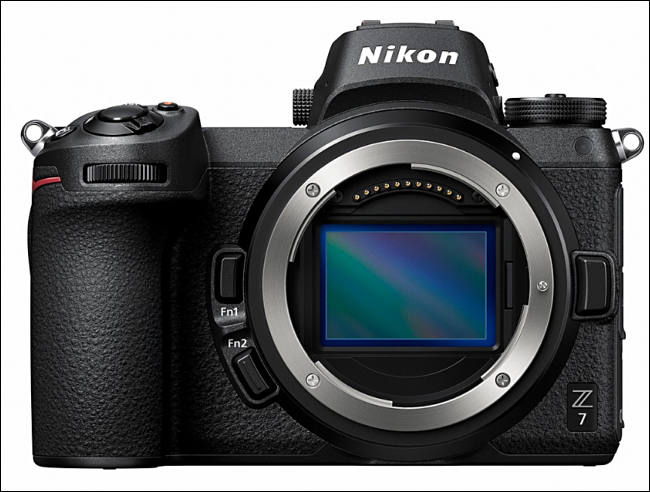
Camera is designed for still shooters.
Video will be nice and present, but won't be pushed by Nikon and marketing much.Specs
- 45.7Mp FF CMOS sensor
- EXPEED 6 LSI
- 5-axis sensor based stabilizer
- Only 2160p30,p25,p24 video, moderate bitrate
- 3840 x 2160 @ 30p / 144 Mbps, MOV, H.264, Linear PCM
- 3840 x 2160 @ 25p / 144 Mbps, MOV, H.264, Linear PCM
- 3840 x 2160 @ 24p / 144 Mbps, MOV, H.264, Linear PCM
- 1920 x 1080 @ 120p, MOV, H.264, Linear PCM
- 1920 x 1080 @ 100p, MOV, H.264, Linear PCM
- 1920 x 1080 @ 60p, MOV, H.264, Linear PCM
- 1920 x 1080 @ 50p, MOV, H.264, Linear PCM
- 1920 x 1080 @ 30p, MOV, H.264, Linear PCM
- 1920 x 1080 @ 25p, MOV, H.264, Linear PCM
- 1920 x 1080 @ 24p, MOV, H.264, Linear PCM
- Also 1080p120, N-LOG profile. 422 10-bit HDMI output
- Only basic functions related to video - focus peaking, zebra
- 493 Phase AF points
- 9fps serial shooting
- 3.2" tiltable 2.1Mdots (up only!) touchscreen
- typical 3.6MDots OLED
- Dual-axis electronic level
- XQD memory card slot (side access)
- Headphone, microphone, USB-C, HDMI and remote ports
- Built-in Wi-Fi and Bluetooth
- EN-EL15b battery
- Weather sealed body
- 675gr
- 134 x 101 x 68 mm
- US price - $3,399.95 body only, $3,999.95 with 24-70mm lens
- EU price - Nikon Z7 + FTZ at 3600 EUR, Z7 + FTZ + 24-70mm kit at 4200 EUR
- Ships in late September
- https://www.bhphotovideo.com/c/search?InitialSearch=yes&N=0&Ntt=nikon+z7&Top+Nav-Search=&sts=ma
- https://www.amazon.com/Nikon-Mirrorless-Digital-Camera-Black/dp/B07GPRBGQ2/
- https://www.amazon.com/Nikon-Mirrorless-Digital-Camera-Bundle/dp/B07GQ3HVW1/
- DE - https://www.calumetphoto.de/category/nikon-z7
- UK - https://www.wexphotovideo.com/search/?q=nikon+z7&search_type=All
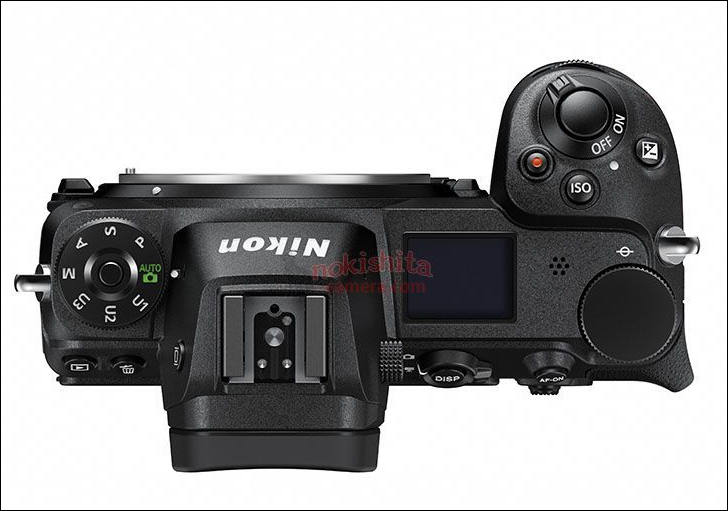
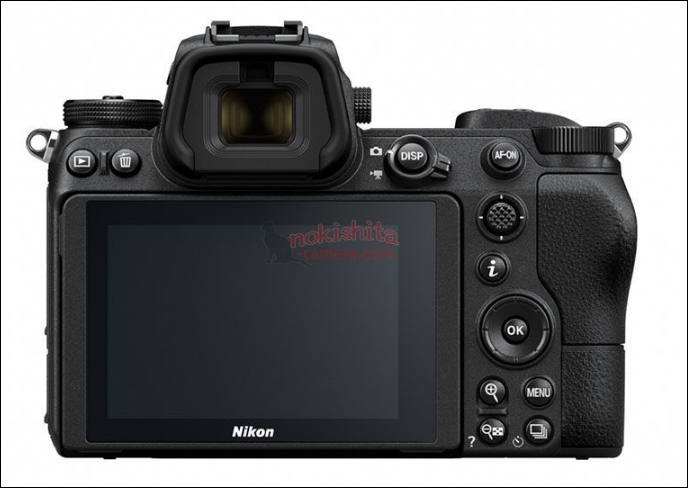

 sa4385.jpg650 x 492 - 52K
sa4385.jpg650 x 492 - 52K -
Dang, that lens mount is intense - but it'll come in handy when you want to pair your light mirrorless camera with a 20-pound 100mm f/0.95 lens, I guess.
-
It can be also marketing decision :-)
I guess one of the consideration is larger than FF sensors, like 1.3x larger.
-
UK prices
- £3399 for bare body
- £3499 for cheap kit
- £3999 for 24-70mm F4 kit
- £4099for 24-70mm F4 kit + adapter
Camera, as I said, sets new record among ALL Nikon cameras in history in margin department.
-
Wow I was not expecting it to be more expensive than the D850. Seems like they are making a compelling argument for the Sony A7RIII.
-
Wow. I wish them luck with those prices. Like Firworks said, with prices/specs like that, I don't see why someone wouldn't just get the a7r3.
-
More Nikon Z7 mirrorless camera leaks:
45.7 MP 493 AF Point 9 fps EVF: 3.6M QVGA 2.1M touchscreen 5-axis stabilization Hybrid PDAF FullHD 120p, 4K UHD 30p Video, 8K time lapse, N-LOG profile (4: 2: 2 10-bit HDMI output), focus peaking, Zebra EN-EL15b battery Wi-Fi, Bluetooth Weather sealed body Price: Nikon Z7 + FTZ around 3600EUR, Z7 + FTZ + 24-70 around 4200EURNEW: the FTZ adapter is working with IBIS.
Read more: https://nikonrumors.com/2018/08/22/more-nikon-z7-leaks-new-specs-pictures.aspx/#ixzz5OxWcm9mn
-
PR
The Z mount system comprises mirrorless cameras featuring a new, larger-diameter mount, and compatible NIKKOR Z lenses and accessories. This system has been realized through the pursuit of a new dimension in optical performance. It has inherited Nikon’s tradition of quality, superior imaging technology, great operability, and high reliability, all innovated from its digital SLR cameras.
At the heart of the new Z mount system is the new, larger-diameter mount, which unlocks further possibilities of lens design, greatly increasing capabilities in optical performance. The Z mount system will offer a variety of high-performance lenses, including the fastest lens in Nikon history, with f/0.95*. Additionally, the new mount adapter will enable compatibility with NIKKOR F mount lenses, adding to the range of choices for photographers.
The letter “Z” represents the culmination of Nikon’s relentless pursuit of ultimate optical performance, and a bridge to a new chapter. It is about redefining possibilities to provide image-makers with tools to realize greater creativity.
Nikon will expand the value of mirrorless cameras through the pursuit of a new dimension in optical performance, and by upholding Nikon’s tradition of quality while responding to the evolution of imaging technology. By providing image-makers with stimulating new products, Nikon will continue to lead imaging culture.
Z 7 and Z 6 product overview
The Z 7 and Z 6 are equipped with a new backside illumination, Nikon FX-format CMOS sensor with focal-plane phase-detection AF pixels, and the latest image-processing engine, EXPEED 6.
The Z 7 has 45.7 effective megapixels, and supports a standard sensitivity range of ISO 64-25600. In combination with NIKKOR Z lenses, the camera achieves an outstanding level of sharpness and detail, all the way to the edges of the image.
The Z 6 is an all-purpose FX-format camera with 24.5 effective megapixels, and supports the wide range of ISO 100-51200 standard sensitivities. With superior performance at high sensitivities and full-frame 4K UHD movie recording with full pixel readout, the Z 6 responds to a variety of needs, such as shooting in dimly lit environments, and movie recording.
Primary features of the Z 7 and Z 6
Equipped with a new backside illumination Nikon FX-format CMOS sensor with focal-plane phase-detection AF pixels
A backside illumination CMOS sensor, with focal-plane phase-detection AF pixels, has been adopted for both the Z 7 and the Z 6. The Z 7 has 45.7 effective megapixels, and supports the ISO 64-25600 range of standard sensitivities (reduction to the equivalent of ISO 32 and expansion to the equivalent of ISO 102400 is also possible). The Z 6 has a 24.5 effective megapixels, and supports a broad range of standard sensitivities, from ISO 100-51200 (additional reduction to the equivalent of ISO 50 and expansion to the equivalent of ISO 204800).
A hybrid AF system with focus points covering approximately 90% of the imaging area
The Z 7 has 493 focus points* and the Z 6 has 273 focus points*, enabling broad coverage of approximately 90% of the imaging area both horizontally and vertically. This hybrid AF system uses an algorithm optimized for the FX-format sensor, and automatically switches between focal-plane phase-detection AF and contrast-detect AF to achieve focus. The use of NIKKOR Z lenses further increases AF accuracy with both still images and movies.
The new EXPEED 6 image-processing engine for sharp and clear imaging, and new functions that support creative imaging expression
The Z 7 and Z 6 are equipped with the new EXPEED 6 image-processing engine. Employing the superior resolving power of NIKKOR Z and NIKKOR F lenses, subjects are rendered more sharply than ever before. Noise is also effectively reduced.
Additionally, a mid-range sharpening option has been added to Picture Control sharpness parameters. This option, along with existing sharpening and clarity parameters, allows users to make various textures within the screen sharper or softer, for both still images and movies*. The cameras also offer 20 options of Creative Picture Control, supporting creative imaging expression. The effect level is adjustable from 0 to 100.
An electronic viewfinder that utilizes Nikon’s superior optical and image-processing technologies to offer a clear and natural view
The electronic viewfinder adopted for the Z 7 and Z 6 is comfortable and easy to use, comparable to optical viewfinders. Both cameras are equipped with an electronic viewfinder for which an approximately 3690k-dot OLED panel has been adopted. The electronic viewfinder has, respectively, frame coverage and magnification of approximately 100% and 0.8x, as well as an approximately 37.0° diagonal viewing angle. It draws on Nikon’s superior optical and image-processing technologies, ensuring a clear and comfortable view comparable to that of optical viewfinders, with reduced aberration and minimum eyestrain, even during extended shoots. Furthermore, a fluorine coat that effectively repels dirt has been applied to the eyepiece protection window. In addition, the menu can be displayed in the electronic viewfinder, allowing users to quickly view and adjust a variety of shooting settings, including ISO sensitivity, AF-area mode, and Picture Control, all while looking through the viewfinder.
An ergonomic design unique to Nikon that enables intuitive operation
The Z 7 and Z 6 have inherited the superior operability that Nikon has cultivated over the years through its development of cameras. The bodies are compact, while boasting a firm grip that is easy to hold, and buttons such as that for the sub-selector, AF-ON, ISO, and exposure compensation are all placed so that they can be operated swiftly and easily. Additionally, a display panel has been positioned on the top part of the camera, where information about settings can be displayed, the same as with high-end digital SLR camera models.
Movie functions such as 10-bit N-Log that captures a wide dynamic range, and timecoding, responding to professional needs
The Z 7 and Z 6 support recording of not only full-frame 4K UHD (3840 x 2160)/30p movies using the FX-based movie format, but also Full-HD/120p movies. Sharper 4K UHD movies are made possible, using the full-pixel readout.1 Additionally, Active D-Lighting, electronic vibration reduction, and focus peaking can be used with 4K UHD and Full-HD movie recording. Nikon’s original N-Log can also be used with 10-bit2 HDMI output. The cameras utilize extensive color depth and twelve-stop, 1300% dynamic range to record a wealth of tone information from highlights and shadows for more effective color grading. Timecode support*3 makes synchronizing video and sound from multiple devices easier. Additionally, the control ring built into NIKKOR Z lenses can be used to quietly and smoothly adjust settings such as aperture and exposure compensation.
Nikon’s first1 in-camera vibration reduction with approx. 5.0-stop effectiveness*
The Z 7 and Z 6 are equipped with in-camera vibration reduction (VR). The VR unit provides compensation for movement along five axes. The effects of vibration reduction are equivalent to a shutter speed up to approximately 5.0 stops2. This function can also be used effectively with NIKKOR F lenses, including those not equipped with a VR function, with the Mount Adapter FTZ (sold separately)3.
Other features
Same level of strength and durability, as well as dust- and drip-resistance, as the Nikon D850, offered in a compact body
An 8-cm/3.2-in., approximately 2100k-dot touch-sensitive LCD monitor, with a tilting mechanism Silent photography function eliminates shake and noise caused by shutter release
Peaking stack image function enables confirmation of the area in focus after shooting using focus shift, which is convenient for focus stacking
High-speed continuous shooting (extended) at approximately 9 fps (Z 7) and 12 fps (Z 6) captures fast motion Interval timer photography that makes 8K (Z 7) time-lapse movie creation*2 possible
An extended low-light metering range allows users to easily capture scenes such as the transition from sunset to starry night sky, using aperture-priority auto mode
Built-in Wi-Fi® for direct connection to a smart device using SnapBridge
Built-in Wi-Fi® makes the transfer of images and movies to a computer possible
Support for existing digital SLR camera accessories such as the WT-7/A/B/C Wireless Transmitter (available separately) for transferring images and movies at high speed over a wired or wireless LAN, and radio-controlled Advanced Wireless Lighting, which makes flexible multi-flash photography possible
-

 sa4362.jpg800 x 531 - 77K
sa4362.jpg800 x 531 - 77K -

 sa4370.jpg800 x 533 - 64K
sa4370.jpg800 x 533 - 64K -
Samples are irrelevant until cats are involved.
-
A 16mm ffd is impressively short!
Of course, Sony's 18mm is more than short enough for the majority of lenses that one might want to mount - I guess it's nice that 16mm allows c mount without an indented adapter, though. I think that's just about the only common mount between 16 and 18mm.
Otherwise, it looks like a totally competent camera with a feature set very competitive with the a7r iii at a price point much higher than the a7r iii.
-
Get my word - Nikon does not compete with Sony much.
It is actually Sony who both set release date and also low price limit.
-
Some interface shots
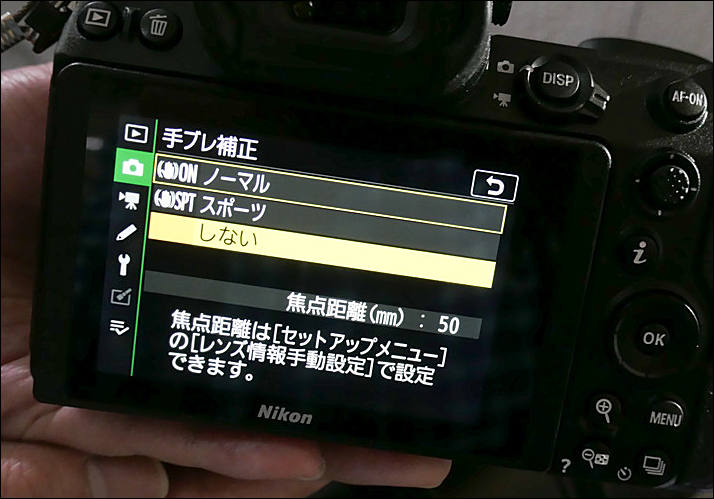
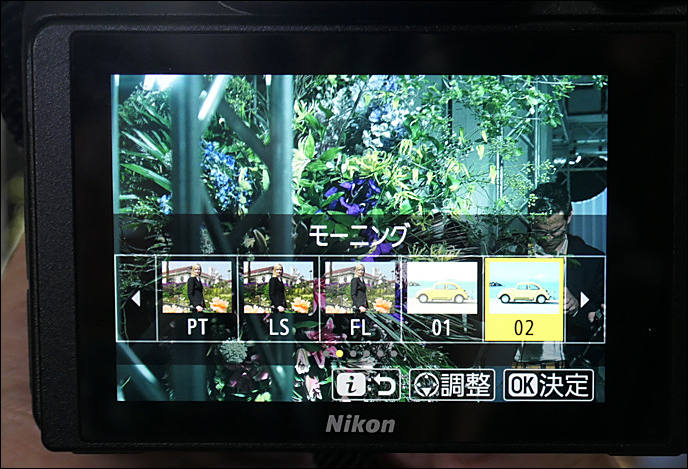
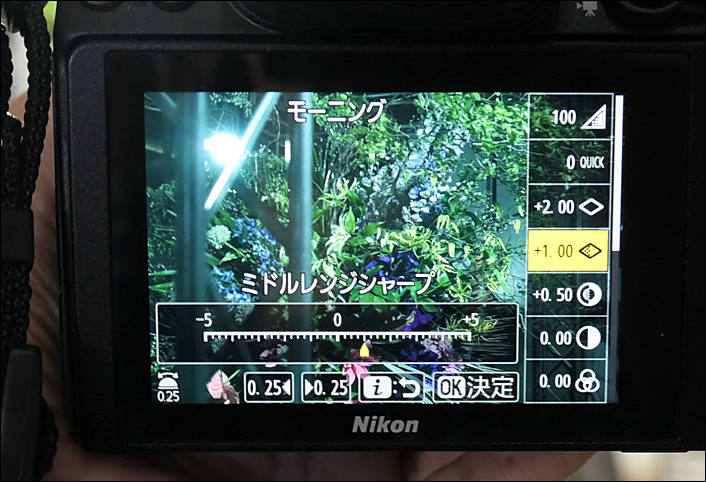

 sa4379.jpg714 x 499 - 53K
sa4379.jpg714 x 499 - 53K
 sa4380.jpg688 x 469 - 80K
sa4380.jpg688 x 469 - 80K
 sa4381.jpg706 x 482 - 74K
sa4381.jpg706 x 482 - 74K -
Z7 is only capable of shooting at 5.5 fps with live view updating and changing exposure. This is fine, but certainly not groundbreaking. The A7 III can do 8 fps with live view and exposure updates.
Buffer in both cameras is extremely small. Can contain only 25 JPEGs and 18 14-bit RAW files after this camera becomes sluggish and starts writing buffer.
Ones of the limits put by agreement with Sony. Each day you see more and more reasons why we saw such sudden PR propaganda about "Nikon making their own sensors".
-
Do I need to add tariffs on top of those prices?
-
You mean VAT or your customs tariffs?
-
Sample videos
-
10-15 min video recording with one full battery charge.
Say thanks to EXPEED 6 LSI that is severely outdated in the day of release, made on old tech norms and due to the shortage of engineers uses lot of old parts.
Howdy, Stranger!
It looks like you're new here. If you want to get involved, click one of these buttons!
Categories
- Topics List23,964
- Blog5,723
- General and News1,342
- Hacks and Patches1,151
- ↳ Top Settings33
- ↳ Beginners254
- ↳ Archives402
- ↳ Hacks News and Development56
- Cameras2,361
- ↳ Panasonic990
- ↳ Canon118
- ↳ Sony154
- ↳ Nikon96
- ↳ Pentax and Samsung70
- ↳ Olympus and Fujifilm99
- ↳ Compacts and Camcorders299
- ↳ Smartphones for video97
- ↳ Pro Video Cameras191
- ↳ BlackMagic and other raw cameras121
- Skill1,961
- ↳ Business and distribution66
- ↳ Preparation, scripts and legal38
- ↳ Art149
- ↳ Import, Convert, Exporting291
- ↳ Editors191
- ↳ Effects and stunts115
- ↳ Color grading197
- ↳ Sound and Music280
- ↳ Lighting96
- ↳ Software and storage tips267
- Gear5,414
- ↳ Filters, Adapters, Matte boxes344
- ↳ Lenses1,579
- ↳ Follow focus and gears93
- ↳ Sound498
- ↳ Lighting gear314
- ↳ Camera movement230
- ↳ Gimbals and copters302
- ↳ Rigs and related stuff272
- ↳ Power solutions83
- ↳ Monitors and viewfinders339
- ↳ Tripods and fluid heads139
- ↳ Storage286
- ↳ Computers and studio gear560
- ↳ VR and 3D248
- Showcase1,859
- Marketplace2,834
- Offtopic1,319
Tags in Topic
- nikon 159
- mirrorless 15
- z 9


